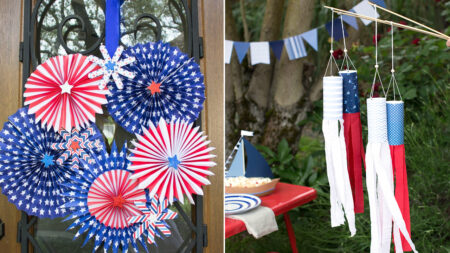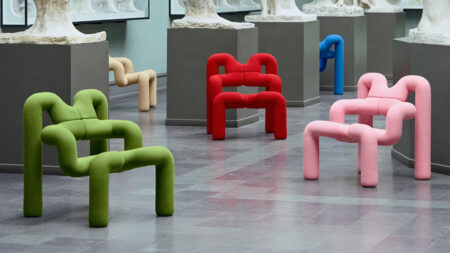Our story commences in the late ’90s, when a guy named Jay Shafer was working as an assistant professor in the art department at the University of Iowa, teaching drawing. He also worked in a grocery store in the produce department whenever he got a break from teaching. Life was going pretty normal in its humdrum tone for Jay until came across a book titled, Tiny Houses: or How to Get Away From It All by Les Walker.
The book comprised hundreds of photographs and detailed drawings of ‘then tiny houses.’ These micro-dwellings were talked about in the conventional sense, as opposed to the modern tiny houses on trailers. “Les Walker wrote the book way back but when I got my hands on it, I was inspired by all these little structures that were in there. I looked up tiny houses in some other places, and it turns out laws in America forbid tiny homes,” says Jay Shafer.

This made Jay adamant about asserting the authorities to change the housing laws or tweak them a bit to accommodate compact housing. He decided to pave the way to not just make tiny houses legal but also put them on wheels to make them road-legal. The only way to achieve that goal was to build his own tiny home on wheels. “I just had to do it and show that the tiny house is safe and efficient, and really should be the standard for housing in general,” he adds.
Jay’s home was the size of a miniature country chapel that boasted weathered wood in its exterior and interior. The structure was then capped by a high-pitched roof to ward off adverse weather conditions. He accoutered crimson-trimmed windows to maintain airflow and squeezed a mattress for sleeping.

Over 25 years have passed since Jay Shafer built his first tiny house on wheels. A time span so long that even a ‘fad’ would transform into a ‘movement.’ Though tiny houses were not seen as a whim or a short-lived trend, they got the tag of a minimalist revolution; a lifestyle choice where people would build and live in a mobile habitat with bare essentials.

But talking and dreaming of living in a tiny house was one thing; building one was yet another challenge. Then there were laws, of course, that barred people from adopting the tiny house on wheels lifestyle. Another challenge was posed by RV companies like Airstream and campervans, which offered a lot more features than a tiny house.
Had it not been for Jay Shafer, what is now known as the tiny house movement would have died there and then. He knew that he had to take the tiny lifestyle mainstream and build and sell a cheap, road-legal tiny house. Thus he founded the Tumbleweed Tiny House Company, in 2002.
“I pretty much launched pictures of my house and the story of my house and the business, all at one time, along with a book I’d written on the subject. A few years later I hooked up with Steve Weissman (Co-founder of Tumbleweed Tiny House Company) because he seemed to be a business-minded person, which I am not. So I was looking for somebody to take care of that end of things,” Jay reminiscences.

Tumbleweed Tiny House Company offered low-priced and road-legal micro-dwellings to people within the US but couldn’t rise to the peak of its popularity and was nowhere near being the future competitor to Airstream, RVs, and caravans. Just when it looked like both Tumbleweed and the tiny house movement were grasping at the straws, things turned around for good.
The Great Recession hit; an economic shock affecting most countries across the world, with the US being a prime victim. People lost their jobs and did not have enough savings to pay house rent. In those circumstances, the tiny house movement rose to the occasion.
“RV sales traditionally slow down during recessions. Tiny houses, however, fall into a different category. They are seen as a housing solution. When compared to purchasing or even renting, tiny homes are a more affordable option. When recessions occur, we see people exploring the purchase of a tiny home because it is too expensive for other housing options,” says Jen Carroll, COO of Tru Form Tiny.
The recession ultimately helped the tiny house movement to grow and spread across the world. With sky-high rents, RVs not being seen as a permanent housing solution, and traditional homes costing residents an arm and a leg, the economic situation favored the movement, offering growth and nourishment to the downsized lifestyle.
In the following years, there came a sudden boom in demand for tiny houses on wheels, not just in America, but the world. People who had a little knack for construction started building their own tiny homes. Two such people were Laetitia and Vincent.
Now the co-owners of Baluchon, Laetitia and Vincent were once strangers, and both built their own homes; one in Loire-Atlantique and the other in Mayenne. Then their paths crossed in 2015 and together they decided to make their shared passion for tiny houses their profession, by giving birth to the company Baluchon.
This period (from 2010 to 2020) also marked the rise of a myriad of tiny house companies including Aussie Tiny Houses, Hauslein Tiny House Company (Australia), Vagabond Haven, (Sweden), Madeiguincho (Portugal), Fritz Tiny Homes, Acorn Tiny Homes, Minimaliste (Canada), Baluchon (France), Tiny Mountain Houses, Modern Tiny Living, Handcrafted Movement, Tru Form Tiny(USA), and many more.
However,a sad reality is that many builders couldn’t garner clients and keep up with the ongoing changes in the industry, and ultimately shut down. But this gave rise to budding builders who had new ideas to revolutionize the movement.
One such man is Lou Pereyra, the Director of Tiny Mountain Houses. Spending his adulthood in factory construction, Lou’s interest in building tiny houses was advocated by his son, Ryan, who presented him with the idea about micro-dwellings. Consequently, he started building and selling them. A misconception spread during this time; hypothesizing that the tiny house lifestyle was just a millennial way or was only catering to the younger generation seeking to buy a house in their twenties.
While there is no survey to put it out, Pereyra dismissed such claims. “I’m finding now that most people buying tiny houses, the decision maker in most of the houses that we build are usually a middle-aged woman, whether it’s for their kids or their parents or a loved one, it’s her. Additionally, people who have bought tiny houses from us also include those who have retired. They want to put the tiny house on their property and move into that, rent out the big house or let the kids move into it. They want to travel in it and embrace the new change in lifestyle,” he informs.
Adding fuel to the fire was social media, You Tube and shows like Tiny House Hunters and Tiny House Nation that glamorized the tiny house movement. Two decades after Jay Shafer had made the first mobile tiny house, the tiny house movement was at its pinnacle. Every movement has its fair share of highs and lows; and for tiny homes, there was a major change awaiting. It was the Park Models.
The demand for such tiny homes surged when people started complaining about living in a cramped space. People took to social media and started talking trash about living in a tiny home. A movement that was once loved wholeheartedly and flexed on TV shows was suddenly getting criticized. The romance was wearing off and once again required something exceptional to rejuvenate, and manufacturers knew exactly what needed to be done.
This gave rise to the inception of custom-designed Park Models tiny homes. Contrary to a tiny house on wheels, Park Models provided more square footage and offered additional living space to the user. On top of that, they are ideal for individuals or families who desire to live in a micro-dwelling, but a spacious one. This ultimately began the slow demise of pre-built tiny houses and led to a new wave of customized abodes in the industry.
D’Arcy McNaughton was one of the earliest to capitalize on the new wave. He had always dreamt of living in a tiny house and selling dream homes to people. “For years my wife and I had been talking about downsizing and going tiny ourselves. At the time, I had been working as a builder for another Ontario-based tiny house company. When I approached them with my design for a tiny house, I was laughed out of the office and told that the design wasn’t practical, it was too complicated and it wasn’t worth the effort.
“This builder had unfortunately gotten lost in the capitalist dream and bragged that he would be delivering a tiny house a day within the next 3-5 years. His dreams of mass production and soulless homes did not align with the values I had come to associate with tiny living, so I decided to branch out on my own and create a tiny house company that itself lives by tiny living values,” explains Darcy.
Born out of that disagreement was Acorn Tiny Homes, a company that has today garnered the status of one of the best tiny house manufacturers, not just in Canada, but the entire North America. D’Arcy constructed his first home and dubbed it Domek. “It was a labor of love as it is our family’s residence. Domek was our path to alternative home ownership that allowed us to be more environmentally conscious and to interact more closely with our natural environment,” he says. Over time, he built many homes including the much-loved Purple Heart Manor, Pine Needle, and Sherloak Homes to name a few.
D’Arcy was not alone in his quest to build a home for himself and then expand the business. Other manufacturers/builders had the same story to tell. Heather Fritz, Co-Founder of Fritz Tiny Homes states, “Before building our first tiny houses, I and my husband used to live in a bus home. The bus home didn’t have good heat or insulation. We hadn’t put that effort into it because it wouldn’t be a long-term solution for us.”
During that time, Heather’s husband Kevin got a job with a high-end custom curve stair and railing company in Edmonton. He was designing masterpiece staircases and they were being flown all over the world. “Kevin loves to create and has a real understanding of high-end fit and finish. So, we decided to start something together and get into business. So, we took out a line of credit, quit our jobs, and built the first tiny house, and that was the Fritz. It was a huge risk to just jump into an industry and build something hoping that there was a buyer on the other end. And there was eventually, and we just started our business,” she states.
Then came the obscurity about what a tiny home on wheels is and how it differs from a Park Model. According to the US building code, a tiny house must maintain a width of 8.5 feet or less to be road-legal. Park models, on the other hand, can be built up to 12 feet wide and require permits and wide load labels to travel on public roadways.
Wind River Tiny Homes CEO, Travis Pyke who has been in business for nearly a decade gives his insight on this. “At the end of the day, Park Model and Tiny Home is pretty much the same thing as far as size, some people build really cheap ones and then others build really nice ones. So that’s kind of the difference,” he states.
Travis also points out, “In the last 10 years with the economic climate, people are not looking for gigantic traditional home that you don’t spend much time in. There are more traveling people, the family sizes are getting smaller and people want more of an experiential lifestyle. By that logic, I wouldn’t call us an affordable housing builder. There are, builders out there that can build an affordable tiny house better than us. But, intentional design, quality craftsmanship, and just like a space that you want to be in a really nice intentional space.”
Just when you think that’s the end of the story, there is always the other side of the coin. “Another way the rich are capitalizing on affordable housing for those who seriously need something to live in. Another helpful idea for us regular folks bites the dust,” states Maree, who often reads Homecrux. Regardless of who Maree is or what she does for a living, she has a valid point.
As per a report published by Forbes, the cost of an average tiny home in America today is $50,000, double of what it cost a decade back. The same is the case with Europe and the Down Under nations. However, the quality of finishing, insulation, paneling, appliances, and accessories offered for $50,000 is a matter of debate. Any tiny house manufacturer in the world has to cut the cost of materials, pay salaries to employees, and then save a profit margin for him/her.
A tiny house sold for fewer than 50K, doesn’t seem to be an ideal choice, which is why the cost of micro-dwelling is skyrocketing. Then there is the demand for bigger tiny houses, surged in recent times.
Mike Cheatham, Vice President at Movable Roots Tiny House Company clarifies on this. “I do believe that the tiny house was about whole mobile kind of aspect, but in reality, for a majority of our clients who have the tiny homes on wheels, a very minimal amount of those customers actually move their home. They like the idea that they can move it, but it really wouldn’t matter to them if they placed it because they’ve been in the same place for an extended period.”
Mike does have a point. Park Models can’t exceed 400 square feet except in Florida, which pretty much sums up why Mike Cheatham and his company Movable Roots are taking orders for grand-size Park Models, since they are based in Florida. “I think some of them (early adaptors of the tiny house movement) went into the movable tiny homes, because there weren’t any tiny homes on a foundation as an option. So there weren’t big corporate home builders out there that were building anything under 1000 square feet,” Cheatham states.
Contrary to Mike and Travis, Manuel Kohout has a different standpoint. Kohout is the CEO of Vagabond Haven, a Sweden-based tiny house company. Manuel, who built custom homes, is more focused on the old-school way, where you have tiny houses or shells pre-built.
Manuel talks of tiny houses being a crisis solution. “We have ready-built models which we furnish according to what we think is a very practical way to equip them. We give an option where one can start from an empty house and then add anything one wants.”
It is notable that comfort, craftsmanship, and affordability, all mean different to different people. Some folks can afford a 300K tiny house, while others would spend all their earning on a 30K tiny home. And even then, there would be few who would be looking for a basic cabin kit that costs between $6,000 and $8,000. Whatever the case, the minimalist spark fueled by Jay Shafer – that started as agitation toward the increasing rents and unaffordability of regular homes –is now a full-blown tiny house movement.
Follow Homecrux on Google News!




